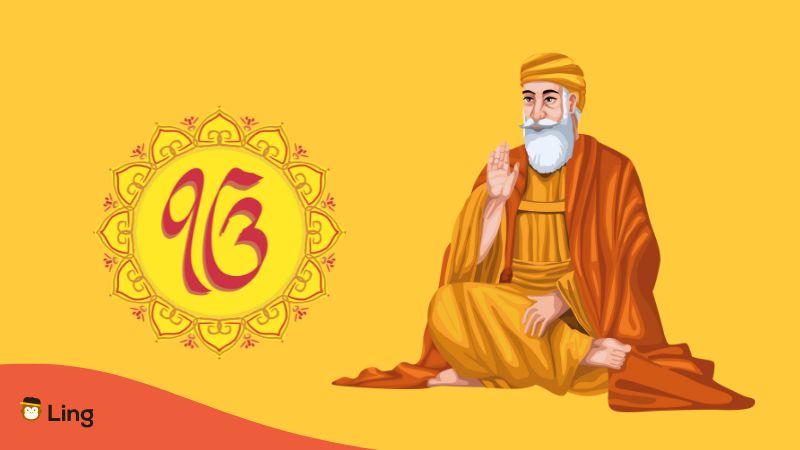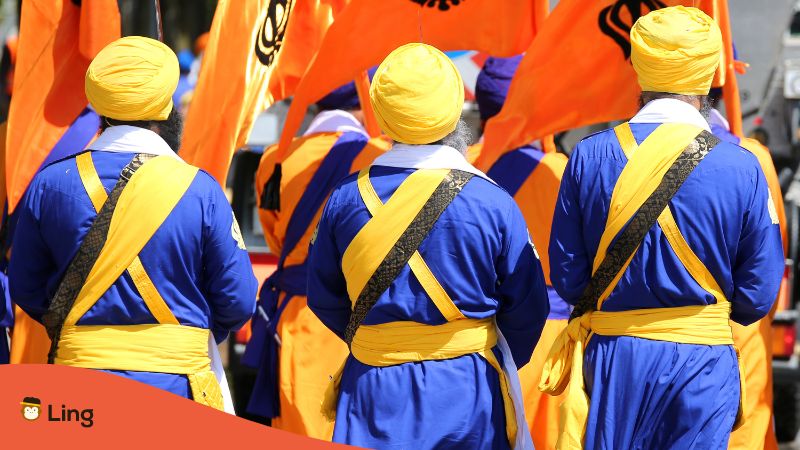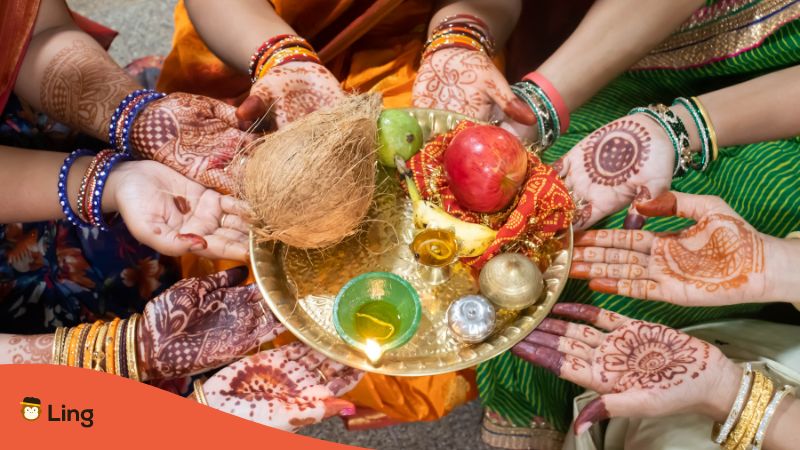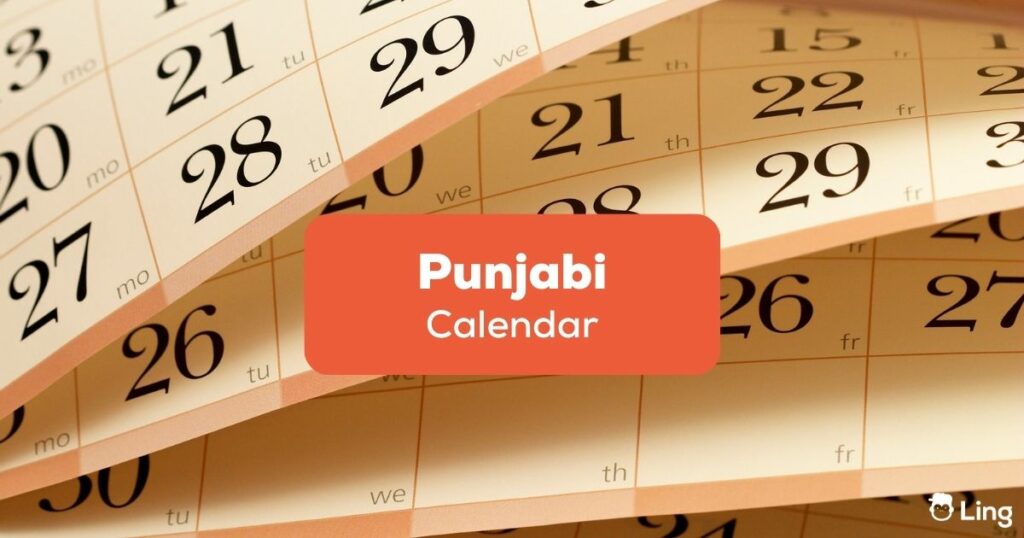If you’re in Punjab or living among the Punjabi diaspora, and you are confused about their customs and day-after-day festivals, don’t worry, we’ve got your back. In this blog post, we’re going to give you an overview of the Punjab calendar, its history, festivals, and a comparison with the western calendar as well.
The article will present you a description of the Punjabi calendar and the other calendars currently used by the Punjab population. Let us delve in and learn some more about Punjabi language and culture.
Punjabi Calendar
The Punjabi calendar, called Punjabi jantari (ਪੰਜਾਬੀ ਜੰਤਰੀ), is a lunar-solar calendar. It is widely used by Punjabis and worldwide, but it can vary according to religion. The Punjabi calendar was first designed in the fifth century, which draws attention to planetary alignment and marks the famous holy Sikh and Hindu festivals.
Speaking about celebrations, Punjab must rank among the states with the most holidays, each of which brings with it a number of days off for you. To help you arrange your schedule, we have compiled a list of holidays. But that’s not all. While you keep track of all the holidays along the way, discover something new about each one in this article and how it is observed.
Punjabi Calendar Is A Lunar Calendar
The Punjabi calendar and timetable are based on the lunar phases or monthly cycles. The Hebrew and Buddhist calendars are examples of pure lunar calendars. A leap day is intercalated into various calendar years in order to make the calendar reflect the seasons or phases of the moon.

Is The Punjabi Calendar Different From Western Calendar?
The Western and Punjabi calendars have 12 months, but their months are named differently and have different beginning and ending dates. In a Western calendar, a year is divided into 12 months. These months have 28, 29, 30, or 31 days, respectively.
The starting month of the Punjabi calendar is Chet (ਚੇਤ) which ranges from mid-March to mid-April. The advent of Chet kicks off the Nanakshahi New Year. But Punjabis usually celebrate Vaisakhi as the Punjabi New Year and its date mostly corresponds to Aril 13 or April. We’ll learn more about these two concepts in detail further down the blog post.
A month is called Maheena (ਮਹੀਨਾ) and a date is called Miti (ਮਿਤੀ) or Tareekh (ਤਰੀਕ). The following table consists of Punjabi calendar months and their Western counterparts.
| English | Punjabi | Transliteration |
|---|---|---|
| mid March – mid April | ਚੇਤ | Chet |
| mid April – mid May | ਵੈਸਾਖ | Vaisakha |
| mid May – mid June | ਜੇਠ | Jeth |
| mid June – mid July | ਹਾੜ | Haarh |
| mid July – mid August | ਸਾਉਣ | Saaun |
| mid August – mid September | ਭਾਦੋਂ | Bhadon |
| mid September – mid October | ਅੱਸੂ | Assu |
| mid October – mid November | ਕੱਤਕ | Katak |
| mid November – mid December | ਮੱਘਰ | Maghar |
| mid December – mid January | ਪੋਹ | Poha |
| mid January – mid February | ਮਾਘ | Magha |
| mid February – mid March | ਫੱਗਣ | Phagun |
Seasonal Moods In Western And Punjabi Calendar
Based on climate shifts that impact countries in the Northern Hemisphere, the Western calendar comprise four seasons: summer, spring, winter, and autumn. Based on the seasonal cycles that influence the whole of India, the Punjabi calendar comprises six seasons.
- Spring: Basant (ਬਸੰਤ)
- Summer – Garisham (ਗਰੀਸ਼ਮ)/ Garami (ਗਰਮੀ)
- Monsoon/ Rainy Season: Sawan (ਸਾਵਣ)
- Autumn/ Fall : Sarad (ਸਰਦ)/ Patjhar (ਪਤਝੜ)
- Winter: Sisir (ਸਿਸਿਰ)/ Seet (ਸੀਤ)/ Sardi (ਸਰਦੀ)
- Late winter/ Early spring: Himkar (ਹਿਮਕਰ)
New hope for brighter times is created by the two-month periods of Spring in Chet (March 14–April 13) and Vaisakh (April 14–May 14). Chet is the first month of the year, heralding the beginning of spring and the conclusion of the season that forces people to hibernate or indulge in indoor activities during winter.
Weekdays In Punjabi Calendar
The Gurumukhi script must be used to write the Punjabi language. However, for the benefit of English readers, the names of the days of the week are also given in Roman letters on this page. Here is the list of the names of days.
| English | Punjabi | Transliteration |
|---|---|---|
| Sunday | ਐਤਵਾਰ | Aitvaar |
| Monday | ਸੋਮਵਾਰ | Somvaar |
| Tuesday | ਮੰਗਲਵਾਰ | Mangalvaar |
| Wednesday | ਬੁੱਧਵਾਰ | Budhvaar |
| Thursday | ਵੀਰਵਾਰ | Veervaar |
| Friday | ਸ਼ੁੱਕਰਵਾਰ | Shukarvaar |
| Saturday | ਸ਼ਨੀਵਾਰ | Shanivaar |
In the Western calendar, each day is divided into 24 hours, with 60 minutes in each. The day is divided into 15 seals, each with 48 minutes, within the Punjabi calendar. In a leap year, the last month has an extra day. From one sunrise to the next, a day is considered.
Nanakshahi Calendar
Pal Singh Purewal, a former computer engineer, and Canadian Sikh created the Nanakshahi Calendar. In the 1960s, he began developing the calendar based on Bara Maha( ਬਾਰਾ ਮਹਾ), the twelve months is widely used in Punjab.
A formula that was created by Sikh gurus that reflects changes in nature during the twelve-month cycle of the year, is the foundation of the Nanakshahi calendar, a tropical solar calendar that is extensively utilized in Sikhism.
The first month of the year, or Chet, starts on March 14. The Nanak Shahi calendar began in 1469 AD, marking the year of Guru Nanak’s birth. The calendar has seven months of 30 days and five months of 31 days. In leap years, which occur every 4 years, the last month is 31 days long.
Movable Dates In Nanakshahi Calendar
The movable dates are the dates in the Nanakshahi calendar that change every year. The Gurpurab and festivals that are observed in accordance with the lunar calendar are referred to as movable, while those that are observed in accordance with the solar calendar are referred to as fixed. Because their dates are not fixed in reference to the solar year, the movable festivals are referred to as such.
They occur on various solar year dates each year, although their lunar date is the same each year. The 10 Patshahis’ Gurpurabs can all be moved. Maghi and Baisakhi are set holidays. The Parkash Gurpurab of Guru Gobind Singh is an illustration of a movable festival. It is observed on the seventh day of the brilliant half of the lunar month of Poh.

Bikrami/Vikrami Calendar Era
The Bikram sambat and Vikram samvator are called the Bikrami calendar/timetable which originates in the Era of Bikram called the “Bikrami era”, and have historically been used by Punjabis in Punjab, Hindus, and Sikhs. The Bikrami calendar is named after King Vikramaditya and begins in 57 BC. It is based on twelve standard hours and 365 solar days. The new lunar year begins in the month of the New Moon.
The revised Nanakshahi calendar did not set the dates for all Sikh and Hindu festivals. Diwali, Hola Mohalla, and Guru Nanak’s birthday are just a few of the Sikh holidays that are widely observed by both Hindus and Sikhs, and their dates are still set using the Bikrami calendar. In Pakistan’s Punjab province, the rural population uses the Bikrami calendar.
Festivals And Events
If you’re considering a beautiful vacation to Punjab, be sure to check the calendar for one of the festivals so you can experience the state’s rich cultural diversity. Here is a list of Punjabi holidays that are observed throughout the year so visit Punjab to enjoy all these festivals.
The population of Sikhs is dominant in Punjab, a large region of Punjab is full of Sikhs that’s why we can say Punjab Festival is also a Sikh Festival. Below are some major Punjab and Sikh festivals.
- Hola Mohalla (ਹੋਲਾ ਮੁਹੱਲਾ)
- Baisakhi (ਵੈਸਾਖੀ)
- Makar Sankranti (ਮਕਰ ਸੰਕ੍ਰਾਂਤੀ)
- Lohri (ਲੋਹੜੀ)
- Karvah chauth (ਕਰਵਾ ਚੌਥ)
- Commemoration of their first Guru Nanak ji (ਗੁਰੂ ਨਾਨਕ ਦੇਵ ਜੀ ਦਾ ਪ੍ਰਕਾਸ਼ ਦਿਵਸ)
- Guru Gobind Singh Jayanti (ਗੁਰੂ ਗੋਬਿੰਦ ਸਿੰਘ ਜਯੰਤੀ)
- Gurgaddi Diwas – the Enthronement Day (ਗੁਰਗੱਦੀ ਦਿਵਸ)

Hola Mohalla Festival (ਹੋਲਾ ਮਹੱਲਾ)
“The Charge of the Sikh Nihang Warriors” is what the term Hola Mohalla (ਹੋਲਾ ਮਹੱਲਾ) refers to. The Hola Mohalla is celebrated in March. In the spring of 1701, the day after Holi, Guru Gobind Singh held the Hola festival here. Many people love this festival.
The 10th Guru, who protected the Sikhs from threats posed by the Mughal Empire, held dear the ideas of bravery and defense preparation. Hola Mohalla conveys these ideas. It is a week-long occasion where Punjabis camp and enjoy public demonstrations of their bravery and skill for three days.
Baisakhi Festival (ਵੈਸਾਖੀ)
As it celebrates the Rabi season’s harvest, Baisakhi (ਵੈਸਾਖੀ) is a significant occasion for farmers in Punjab. At this time of year, wheat crops can be seen swaying and expanding all throughout Punjab. Baisakhi is a celebration with unique religious significance that commemorates the Khalsa, or Sikh New Year, and this festival is also observed by Sikhs all over the world.
It is observed each year on April 13 or 14. In 2024, the Baisakhi festival will fall on April 13th. It encourages justice, equality, and the development of a more just society. Members swear to wear the five articles of religion and to meditate every day.
Makar Sankranti Festival (ਮਕਰ ਸੰਕ੍ਰਾਂਤੀ)
The Hindu solar calendar determines Makar Sankranti’s date as being on the first day of the tenth solar month, Magh, when the Sun is changing from Dhanu Rashi (Sagittarius) to Makar Rashi (Capricorn). The Hindu calendar’s coldest month is this one. In Punjab, Makar Sankranti is observed as Maghi (ਮਘੀ), a religious and cultural festival.
It comes after Lohri in a day, and it is a popular festival in most parts of the country, but it is at its peak, especially in northern India. This festival marks the arrival of the harvest season and the end of winter as the days get longer.
Lohri Festival (ਲੋਹੜੀ)
Lohri is a celebration of the arrival of long days after the winter solstice and is celebrated across the Punjab, Delhi, and other northern Indian regions. For Punjabi farmers, Lohri is the start of the new year. Before harvesting starts, farmers express their thanks for their crops on this day and ask Lord Agni (fire) to bless their land with an abundance of crops.
After the rabi crops are chopped, a large bonfire is traditionally lit in the yard to commemorate Lohri. This Poh-month holiday is typically observed on January 13. It is also a traditional way of welcoming winter and longer days.

Karva chauth Festival (ਕਰਵਾ ਚੌਥ)
One well-known celebration in Punjab is Karva Chauth (ਕਰਵਾ ਚੌਥ). In honor of their husbands’ health and longevity, married and engaged women observe a fast from sunrise to moonrise on the fourth day of the waning moon fortnight (Krishna Paksha) in the Katak month. Women dress up, adorn themselves, and make themselves look beautiful exactly like they did on their wedding day.
Before the sun rises, the mother-in-law makes a special breakfast called Sargi (ਸਰਗੀ) to start the day. This is followed by a daylong fast, a special Puja, and Paath performed by a group of married and engaged women. Only after sighting the moon and performing a unique ritual is the fast broken, and then they take their first drink of water.
Guru Nanak’s Birthday
On November 8, the full moon of the Indian lunar month of Kartik, Guru Nanak dev was born. Guru Dev is the founder of the Sikh religion. Due to its connection to Sikh customs and faith, they celebrate this festival in Punjab. Sikhs congregate in large numbers to observe this day each year. Candles are lit at Gurudwaras in remembrance of the Guru Dev. Guru’s birthday parties with Punjabi music typically last for three days.
Guru Gobind Singh Jayanti
A celebration honoring Guru Gobind Singh Ji, the 10th Guru of the Sikhs, on his birthday. It is a religious ceremony during which prayers are spoken for prosperity, devotional songs are sung during the procession, and sweets and a cold beverage, or sharbat, are distributed to both adults and children.
At the places of worship known as Gurudwaras, unique prayer services are also organized. On January 9, 2022, Guru Gobind Singh Jayanti was observed. Guru Gobind Singh is the tenth Guru of the Sikhs and a spiritual guide, poet, and philosopher. He will turn 355 years old this year, in 2022. People also feed the poor with popular Punjabi food.
Gurgaddi Diwas Or Enthronement Day (ਗੁਰਗੱਦੀ ਦਿਵਸ)
The Jathedars (heads) of the five Takhats of Sikhism have jointly supported Gurgaddi Diwas (Enthronement Day) of the seventh Sikh Guru, Guru Har Rai, as Sikh Environment Day (SED). The date has been set as March 14, the day Guru Har Rai was crowned. This celebration continue for almost a week not only in Punjab but worldwide.
Wrapping Up
Well, this was the overview of the Punjab calendar. We hope we have satisfied your curiosity. Are you wondering if it’s hard to learn the Punjabi language? Well not with the Ling app on which you can learn the Punjabi language for free. Download the app now to have the best experience!
Updated by Punya



































































